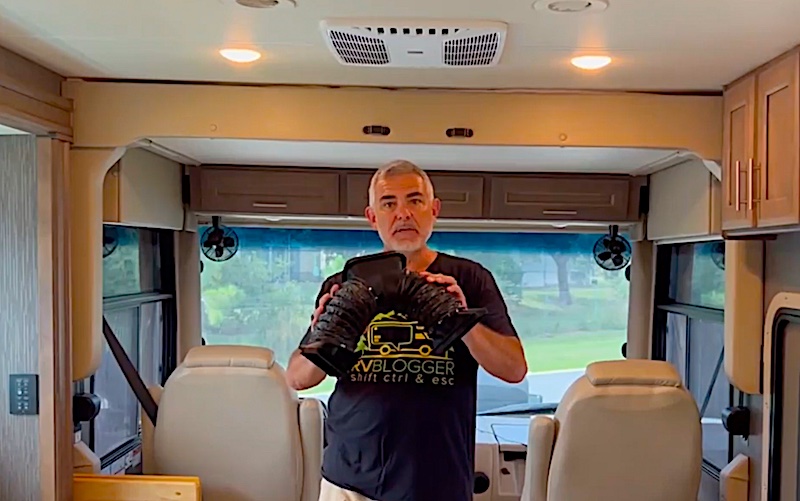Thanks for your support! If you make a purchase using our links in this article, we may make a commission. And, as an Amazon Associate, I earn from qualifying purchases. See the full disclosure here.
If your RV A/C isn’t keeping you cool, it could be due to a wide variety of reasons. Thankfully, there are several things you can do to maximize your RV A/C performance and ensure you stay cool.
Susan and Mike (the owners of RVBlogger) have a total of 3 RV air conditioners on their RVs. One on their 2008 Class C Gulf Stream Conquest and 2 A/C units on their Thor Challenger Class A RV. They have some great suggestions to improve the performance and efficiency of your RV A/C.
Let’s go in-depth on RV A/C, reasons it’s not blowing cold air, and how to maximize performance. As with many things, preventative maintenance plays a big factor. However, we’ll also look at a quick A/C upgrade that will make you cool and comfy in your RV.
Why Isn’t My RV A/C Blowing Cold Air?
If your RV A/C isn’t blowing cold air, there could be a variety of different causes.
One possibility is that you have a mechanical issue, such as a broken compressor, condenser, or fan. This is especially likely if your air conditioner is making a lot of noise while running, or absolutely no noise at all.
Old or dirty air filters and or coils are another common issue. If you don’t regularly clean and replace air filters, it will impact performance. If you are in a dusty area A/C filters can collect dirt quickly, lessening the cooling of your unit.
Susan and Mike had this issue on their Class A RV after they drove down a 5 mile dirt road to a Harvest Hosts winery. The amount of dust was unbelievable and their AC units they were filthy and inefficient. Now they have their RV rooftop air conditioners professionally cleaned every year to ensure that they operate correctly.
Leaks in a duct system are another possible culprit. Checking for this is fairly easy; simply run the air conditioner, and check all the ducts and connections by placing your hand over them.
If you feel the air against your hand, or a loose connection, then you’ve found your leak. Even a small leak can make a difference. Your RV A/C needs all the help it can get to keep things cool inside.
The final common issue is with the design of your air conditioning system. Yes, that’s right your A/C isn’t designed for maximum airflow.
Rather than…
Click Here to Read the Full Original Article at RVBlogger…
